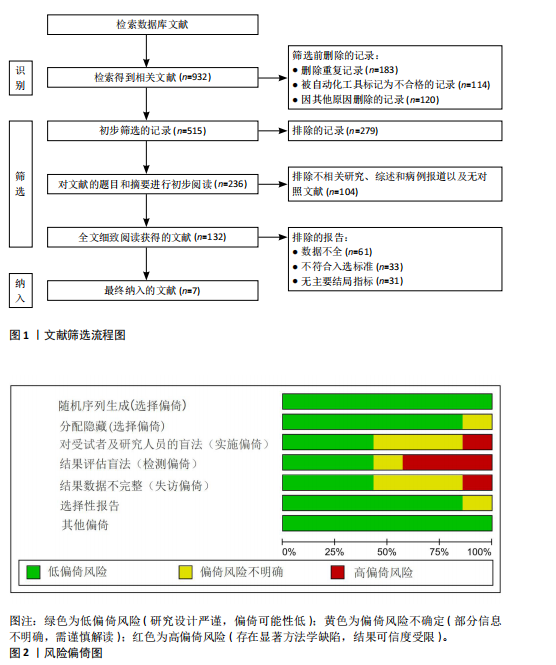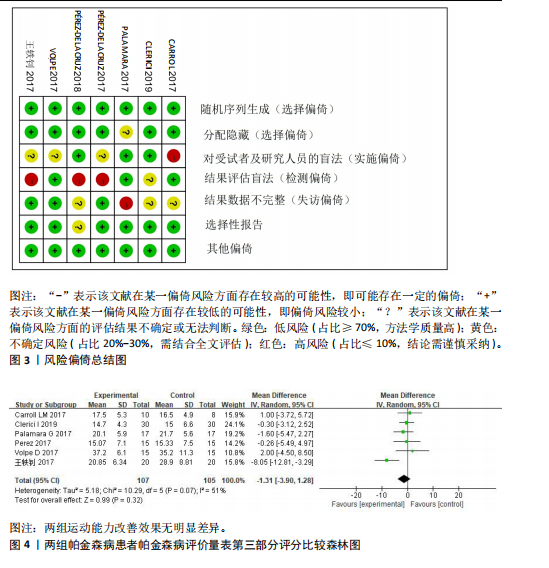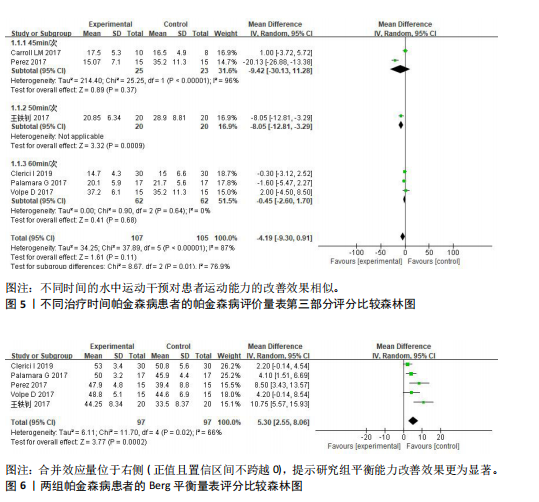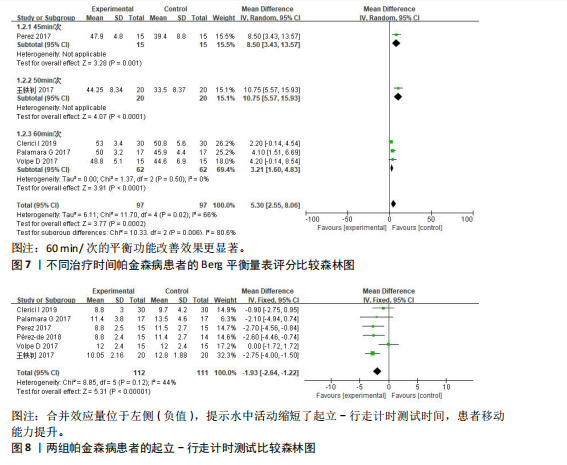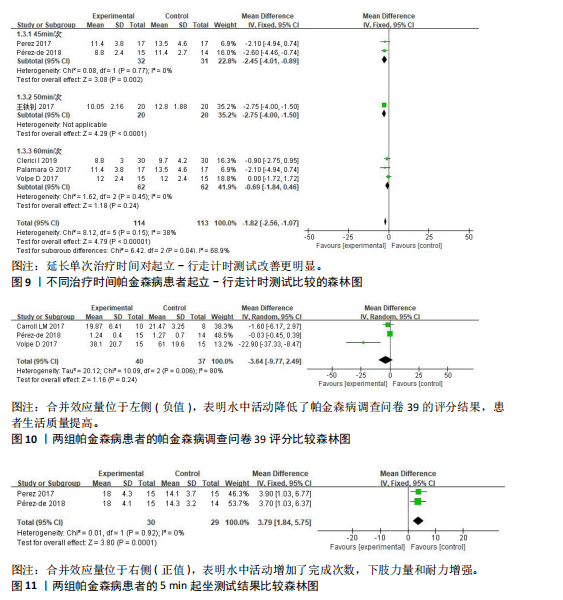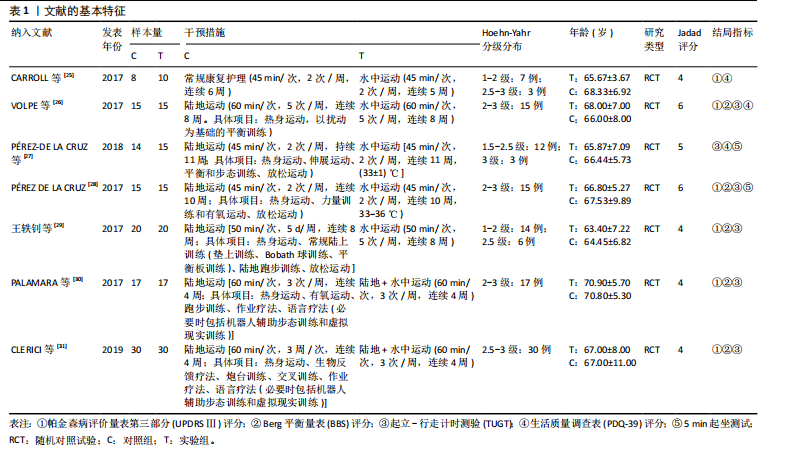[1] MORRIS HR, SPILLANTINI MG, SUE CM, et al. The pathogenesis of Parkinson’s disease. Lancet. 2024;403(10423):293-304.
[2] 孙高慧,冯美江.帕金森病的诊断和治疗进展[J].实用老年医学,2025,39(2):110-115.
[3] 曾景蓉,许保磊,许二赫.帕金森病的脑血流调节研究进展[J].中风与神经疾病杂志,2024,41(11):973-976+960.
[4] 史明英,车睿,杨若澜,等.老年帕金森病患者平衡功能变化的影响因素分析[J].老年医学与保健,2023,29(3):524-527+533.
[5] 邵一平.帕金森病患者平衡功能障碍发生状况及影响因素[J].医药论坛杂志,2022, 43(18):53-55+58.
[6] 邬振楠,王逸群.Rood技术联合分类组合运动康复对帕金森病患者Webster评分及运动能力的影响[J].中国实用神经疾病杂志,2025,28(2):186-190.
[7] ERNST M, FOLKERTS AK, GOLLAN R, et al. Physical exercise for people with Parkinson’s disease: a systematic review and network meta-analysis. Cochrane Database Syst Rev. 2023;1(1):CD013856.
[8] 冯卫星,牛丽芸,贾妮,等.针刺联合康复训练治疗帕金森病姿势障碍的临床疗效观察[J].中华中医药杂志,2024,39(6): 3192-3196.
[9] GULCAN K, GUCLU-GUNDUZ A, YASAR E, et al. The effects of augmented and virtual reality gait training on balance and gait in patients with Parkinson’s disease. Acta Neurol Belg. 2023;123(5):1917-1925.
[10] 李晶,沈骏,姜宇,等.运动康复训练对合并认知障碍的帕金森病患者认知功能的影响[J].中国现代医药杂志,2025, 27(1):54-56.
[11] 王亚囡,刘惠林,杜雪晶,等.水中平板步行训练对恢复期脑卒中偏瘫患者姿势控制及步态对称性的疗效[J].中国康复, 2022,37(3):140-144.
[12] PEYRÉ-TARTARUGA LA, MARTINEZ FG, ZANARDI APJ, et al. Samba, deep water, and poles: a framework for exercise prescription in Parkinson’s disease. Sport Sci Health. 2022;18(4):1119-1127.
[13] SADAAK MM, ABDELMAGEED SF, IBRAHIM MM. Effect of aquatic versus conventional physical therapy program on ankle sprain grade III in elite athletes: randomized controlled trial. J Orthop Surg Res. 2024; 19(1):400.
[14] FAÍL LB, MARINHO DA, MARQUES EA, et al. Benefits of aquatic exercise in adults with and without chronic disease-A systematic review with meta-analysis. Scand J Med Sci Sports. 2022;32(3):465-486.
[15] DAI S, YUAN H, WANG J, et al. Effects of aquatic exercise on the improvement of lower-extremity motor function and quality of life in patients with Parkinson’s disease: A meta-analysis. Front Physiol. 2023;14:1066718.
[16] SIEGA J, IUCKSCH DD, DA SILVA AZ, et al. Parkinson’s disease and multicomponent aquatic exercise: Effects on motor aspects, functional mobility, muscle function and aquatic motor skills. J Bodyw Mov Ther. 2021;27:314-321.
[17] YAMAGUCHI B, IUCKSCH DD, PALADINI LH, et al. Effects of an Aquatic Physical Exercise Program on Ventilatory Parameters in People with Parkinson’s Disease. Parkinsons Dis. 2022;2022:2073068.
[18] CARROLL LM, MORRIS ME, O’CONNOR WT, et al. Community aquatic therapy for Parkinson’s disease: an international qualitative study. Disabil Rehabil. 2022; 44(16):4379-4388.
[19] 中华医学会神经病学分会帕金森病及运动障碍学组.中国帕金森病治疗指南(第三版)[J].药学与临床研究,2014, 22(4):290.
[20] SHENG Y, ZHOU X, YANG S, et al. Modelling item scores of Unified Parkinson’s Disease Rating Scale Part III for greater trial efficiency. Br J Clin Pharmacol. 2021;87(9): 3608-3618.
[21] JENKIN J, PARKINSON S, JACQUES A, et al. Berg Balance Scale Score as a Predictor of Independent Walking at Discharge among Adult Stroke Survivors. Physiother Can. 2021;73(3):252-256.
[22] ORTEGA-BASTIDAS P, GÓMEZ B, AQUEVEQUE P, et al. Instrumented Timed Up and Go Test (iTUG)-More Than Assessing Time to Predict Falls: A Systematic Review. Sensors (Basel). 2023;23(7):3426.
[23] HANFF AM, MCCRUM C, RAUSCHENBERGER A, et al. Validation of a Parkinson’s disease questionnaire-39-based functional mobility composite score (FMCS) in people with Parkinson’s disease. Parkinsonism Relat Disord. 2023;112:105442.
[24] JIA X, WANG Z, HUANG F, et al. A comparison of the Mini-Mental State Examination (MMSE) with the Montreal Cognitive Assessment (MoCA) for mild cognitive impairment screening in Chinese middle-aged and older population: a cross-sectional study. BMC Psychiatry. 2021;21(1):485.
[25] CARROLL LM, VOLPE D, MORRIS ME, et al. Aquatic exercise therapyfor people with parkinson disease: arandomized controlled trial. Arch Phys Med Rehabil. 2017;98(4):631-638.
[26] VOLPE D, GIANTIN MG, MANUELA P, et al. Water-based vs. non-water-based physiotherapy for rehabilitation of postural deformities in Parkinson’s disease: a randomized controlled pilot study. Clin Rehabil. 2017;31(8):1107-1115.
[27] PÉREZ-DE LA CRUZ S. A bicentric controlled study on the effects of aquatic Ai Chi in Parkinson disease. Complement Ther Med. 2018;36:147-153.
[28] PÉREZ DE LA CRUZ S. Effectiveness of aquatic therapy for the control of pain and increased functionality in people with Parkinson’s disease: a randomized clinical trial. Eur J Phys Rehabil Med. 2017; 53(6):825-832.
[29] 王轶钊,赵骅,冯诗淳,等.水中运动训练对帕金森病患者运动功能、平衡功能和行走能力的康复作用[J].中国现代神经疾病杂志,2017,17(5):346-351.
[30] PALAMARA G, GOTTI F, MAESTRI R, et al. Land Plus Aquatic Therapy Versus Land-Based Rehabilitation Alone for the Treatment of Balance Dysfunction in Parkinson Disease: A Randomized Controlled Study With 6-Month Follow-Up. Arch Phys Med Rehabil. 2017;98(6):1077-1085.
[31] CLERICI I, MAESTRI R, BONETTI F, et al. Land Plus Aquatic Therapy Versus Land-Based Rehabilitation Alone for the Treatment of Freezing of Gait in Parkinson Disease: A Randomized Controlled Trial. Phys Ther. 2019;99(5):591-600.
[32] 马雯,刘友涵,王运良,等.不同运动训练方式促进帕金森病康复的免疫调控机制[J].神经解剖学杂志,2024,40(5):631-635.
[33] 魏丙超,丁彩云.前庭康复训练辅助康复运动训练对老年帕金森病患者平衡能力、肢体功能及认知功能的影响[J].反射疗法与康复医学,2024,5(17):78-81.
[34] 张锐,张明月,孙启媛,等.帕金森病病人接受团体康复运动体验的质性研究[J].全科护理,2024,22(14):2587-2591.
[35] 武琪,刘志坚,程玲,等.水疗法对轻中度帕金森患者作用效果的荟萃分析[J].临床与病理杂志,2021,41(2):374-382.
[36] 郭云,俞兰芝.运动康复联合呼吸调节训练在帕金森运动障碍患者中的应用[J].护理实践与研究,2023,20(22):3433-3437.
[37] BANGE M, HERZ DM, CIOLAC D, et al. Modifying the progression of Parkinson’s disease through movement interventions: multimodal quantification of underlying mechanisms. Neural Regen Res. 2024;19(8): 1651-1652.
[38] 沈子威,姚岚,付晓平.头针疗法联合运动训练对老年脑卒中患者下肢功能、步行能力和血清BDNF、NGF水平的影响[J].中国老年学杂志,2024,44(18):4417-4420.
[39] 沙莎.运动预处理对脑缺血/再灌注损伤大鼠肠道菌群及DOR-BDNF/TrkB信号通路介导的神经再生的影响[D].哈尔滨:黑龙江中医药大学,2024.
[40] RUITENBERG MFL. Cognition and movement in neurodegenerative disorders: a dynamic duo. Neural Regen Res. 2024;19(10):2101-2102.
[41] 付雪莹.力量训练上调PGC-1α/Irisin/BDNF表达改善帕金森病小鼠运动障碍[D].郑州:河南大学,2024.
[42] 宋寅平,张璐璐.有氧运动对帕金森疾病神经反应抑制的改善机制及方法探讨[J].当代体育科技,2023,13(19):31-34.
[43] 潘琪,杨堃,陈颖,等.跑台运动改善帕金森病大鼠模型的黑质多巴胺能神经元退变和运动障碍表现[J].立体定向和功能性神经外科杂志,2022,35(2):65-70.
[44] 付钰,冯梓芸,丁懿,等.运动训练干预化疗诱导周围神经病变的研究进展[J].护理研究,2024,38(11):1987-1991.
[45] 何华岗,吴德峰,李英豪,等.运动训练在抑郁症预防和治疗作用中的研究进展[J].神经解剖学杂志,2024,40(5):653-657.
[46] 孙丽娜,张晓晓,金硕,等.运动训练对创伤后应激障碍小鼠焦虑和抑郁样行为的影响[J].神经解剖学杂志,2024,40(2): 171-178.
[47] 苏园园.悬吊训练核心肌群对帕金森病病人平衡能力及运动功能的影响[J].全科护理,2024,22(19):3644-3647.
[48] TAO Y, LUO J, TIAN J, et al. The role of robot-assisted training on rehabilitation outcomes in Parkinson’s disease: a systematic review and meta-analysis. Disabil Rehabil. 2024;46(18):4049-4067.
[49] ELDEMIR S, GUCLU-GUNDUZ A, ELDEMIR K, et al. The effect of task-oriented circuit training-based telerehabilitation on upper extremity motor functions in patients with Parkinson’s disease: A randomized controlled trial. Parkinsonism Relat Disord. 2023;109:105334.
[50] JACKSON M, KANG M, FURNESS J, et al. Aquatic exercise and mental health: A scoping review. Complement Ther Med. 2022;66:102820.
[51] 李琴,陈妙虹,沈曼璇,等.水中运动对帕金森病患者下肢肢体功能影响的Meta分析[J].中华护理杂志,2021,56(2):276-282.
[52] TERRENS AF, SOH SE, MORGAN P. What web-based information is available for people with Parkinson’s disease interested in aquatic physiotherapy? A social listening study. BMC Neurol. 2022;22(1):170.
[53] CHRISTINELLI T, DEBONA IUCKSCH D, SIEGA J, et al. What are the effects of aquatic physiotherapy exercises on speed and complex gait-related activities in individuals with Parkinson’s disease. J Bodyw Mov Ther. 2024;40:88-92.
[54] 宋菲菲,季红,贾锟,等.水中运动疗法在帕金森病病人康复中的应用研究进展[J].护理研究,2021,35(11):1951-1953.
[55] 朱为模,李校堃,付小兵,等.温泉结合运动疗法在疾病治疗和康复中的应用:中国专家共识(2024)[J].体育科研, 2024,45(6):1-22.
[56] VOLPE D, SPOLAOR F, SAWACHA Z, et al. Muscular activation changes in lower limbs after underwater gait training in Parkinson’s disease: A surface emg pilot study. Gait Posture. 2020;80:185-191.
[57] 沈斌,祁祥,沈艳,等.前庭康复训练结合步态训练对老年帕金森病患者Webster评分、BBS评分及跌倒发生率的影响[J].中国老年学杂志,2022,42(3):614-617.
[58] 赵榕婷,盛蕾.水中运动康复对膝关节损伤患者功能恢复的影响[J].体育与科学,2023,44(2):110-120.
[59] 邝凌雲,范雅青,韩延柏,等.不同水疗参数水中运动对脑卒中患者步行能力的影响[J].右江民族医学院学报,2024, 46(1):127-131.
[60] 赵永红,闻春波,戚亚敏,等.有氧水疗对痉挛型脑瘫患儿运动、平衡功能及肌张力的影响[J].中国康复,2021,36(2):93-97.
[61] AYÁN C, CANCELA JM, GUTIÉRREZ-SANTIAGO A, et al. Effects of two different exercise programs on gait parameters in individuals with Parkinson’s disease: a pilot study. Gait Posture. 2014;39(1):648-651.
[62] 赵梦遐,孔令磷,罗菊英,等.水疗法在脑卒中患者康复训练中的应用研究进展[J].吉林医学,2021,42(9):2267-2270.
[63] 黄浩.水疗对痉挛型脑瘫儿童肌力及运动功能的影响[D].广州:广州体育学院, 2023.
[64] 文凡,朱欢,王康锋,等.水中运动疗法对常见慢性病干预效果的研究进展[J].体育科技文献通报,2024,32(2):236-241.
[65] 范忠贺.水中步行训练对ACL重建术后早期患者平衡及步行功能恢复的影响[D].成都:成都体育学院,2023.
|
